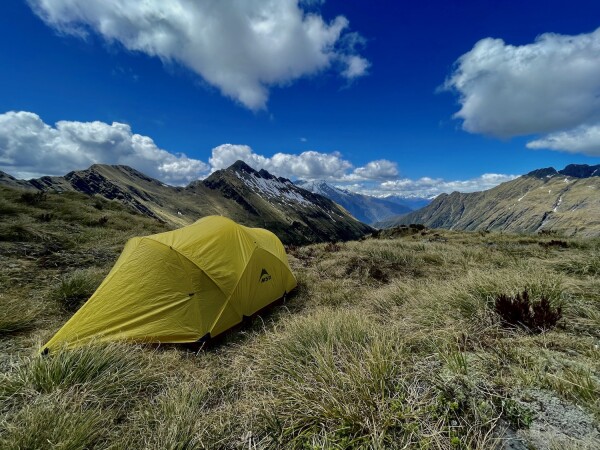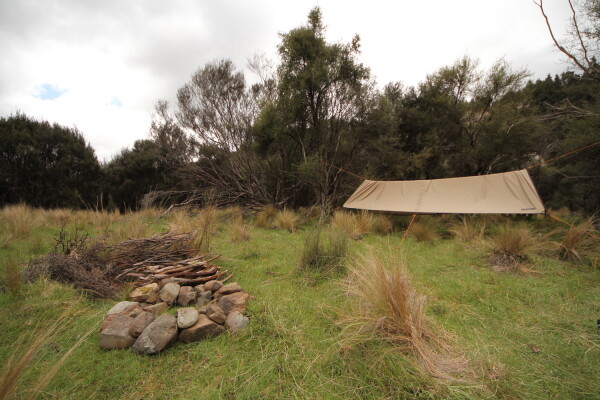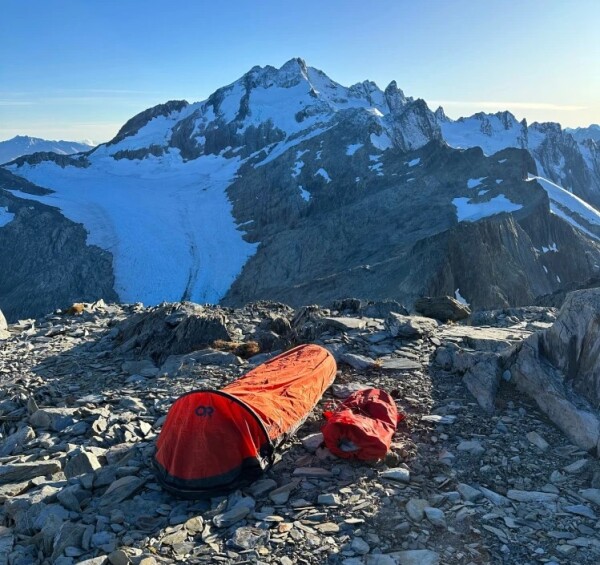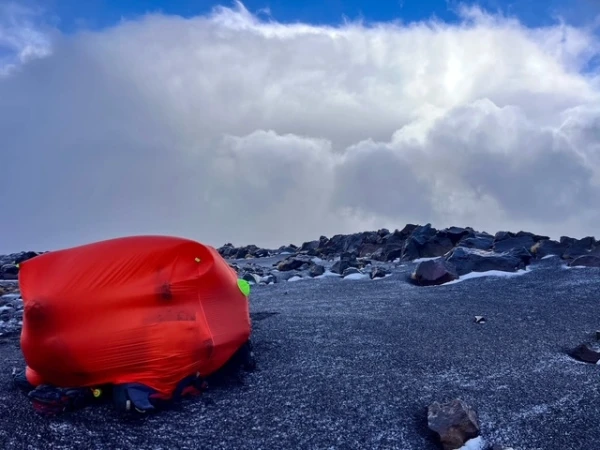In the outdoors, the unexpected can catch us off guard and mean our plans need to change, sometimes forcing us to spend an unexpected night out. This could be due to an injury, bad weather, a flooded river, or just taking longer than expected to reach the final destination for the day. In these situations, it’s not guaranteed that the weather will be fine, and once you stop, you’ll get cold, and possibly wet, quickly. Carrying a suitable emergency shelter is essential for these situations.
What is an Emergency Shelter?
An emergency shelter is a lightweight, easy-to-use layer of protection from the weather. Unless you’re planning to camp, it’s not a shelter you intend to use on your trip unless something goes wrong or you need to change your plans.
Benefits of an Emergency Shelter
An emergency shelter provides a range of important benefits:
- Protection from the elements: Shelters you from wind, rain, snow and helps to combat cold temperatures, reducing the risk of hypothermia or other temperature-related issues, and extending the amount of time you can withstand the conditions.
- Psychological comfort: Boosts morale during unexpected situations, providing a sense of security, safety and comfort.
- Visibility for rescuers: Brightly coloured shelters can make it easier for search and rescue teams to locate you.
When to Pack an Emergency Shelter
Carrying an emergency shelter is a wise precaution for most outdoor activities. At a minimum, it is recommended for any activity, especially in remote locations. Even on shorter walks and hikes, unforeseen delays or incidents can happen.
Situations where carrying an emergency shelter is recommended:
- Remote or unfamiliar terrain: When exploring isolated or backcountry areas and the likelihood of encountering challenges increases.
- Challenging weather conditions: If there's a chance of rain, snow or strong winds.
- Solo adventures: When you won’t have a companion to assist in an emergency or with an injury.
- Large groups: When out with a big group, such as a school trip or club activity. It only takes one person to get injured to stop the whole group and you don’t want lots of people getting cold and wet. Carry enough shelters between you to ensure everyone is accommodated.
- Alpine terrain: The weather can deteriorate quickly in an alpine environment and there are emergency shelters made specifically for these conditions.
To decide whether you should take an emergency shelter, ask yourself these questions:
- How long is the trip?
- How remote is the location?
- Who is going?
- What’s the weather forecast?
- If something went wrong, what would I do?
- If something went wrong, would I have to wait for help?
Top tip: An emergency shelter can also be used on rest breaks, such as for a lunch stop, to shelter from the wind or rain
Comparing Emergency Shelters
There are a range of emergency shelters available in New Zealand. Any emergency shelter should be lightweight, compact and easy to use. Other factors to consider when choosing an emergency shelter include the terrain, how many people you need to accommodate and your personal preferences, of course!
If you’re planning to camp and you’re carrying a tent, then your emergency shelter is already sorted! However, a tent can also be used specifically as your emergency shelter. In this instance, you’ll want a lightweight tent that isn’t too bulky, as it’s only going to be needed for emergencies. Purpose-designed tarps or flys are large rectangles of lightweight, waterproof fabric. They are easy to set up using walking poles or trees, making them a convenient emergency shelter that can be setup almost anywhere. Another option instead of a tarp is a tent fly, which will be lighter than carrying your full tent. If you have a tent, check to see if you can remove the fly. When buying a new tent, consider this function in your decision-making. If it’s too windy to set up your tarp or fly, such as on a ridgeline, you can also use it as a DIY bothy bag. A bivvy bag is a good option for anyone travelling solo, and is also ideal for alpine environments where there aren’t suitable places to pitch a full shelter. As the name implies, the bivvy bag is a lightweight, compact waterproof bag that you can lie down inside of, providing greater protection from the elements than just a sleeping bag. Bigger bags also have room for a pack. Top tip: When sleeping under the stars on a clear night, a bivy bag will prevent your sleeping bag from getting wet from dew. A less commonly used but highly practical emergency shelter in NZ is a bothy bag. Made of waterproof material, a bothy bag allows you to shelter from the elements as a group, and set up your cooker to enjoy a hot drink. Bothy bags come in different sizes, depending how many people you need to accommodate. To set up a bothy bag, everyone stands in a circle facing inward holding around the edge of the fabric. Together, lift the ‘bag’ up to fill with air and flick it behind you (step in at the same time) so the material goes over your heads, then pull the edge down and sit down on it. This creates a large balloon-like shape filled with air. Everyone should be seated in a circle inside the bothy bag, around the edge. The air will warm up quickly, but be sure to allow some fresh air in, especially if you set up your cooker!


Top Tips for Using an Emergency Shelter
When setting up your shelter, it’s important to consider the location. You need somewhere that is safe – so away from hazards like falling tree branches or potential flooding – and ideally flat. Seek out natural windbreaks, such as large rocks or dense vegetation, as these will provide you with extra protection from the elements.
If you are taking an emergency shelter for the first time, learn how to set it up before your trip. This will significantly reduce the setup time during an emergency, especially if you’re feeling stressed. Having a range of different ways to set it up (e.g., using walking poles, sturdy sticks) can also help you to be ready for whatever terrain or weather.
How to Stay Safe Without an Emergency Shelter
If you didn’t pack an emergency shelter, don't panic! You’ll need to use whatever resources you have available to you. The first step is to stay warm, so put on all your warm dry layers, including your waterproof jacket and overtrousers.
A pack liner, like the distinctive bright yellow NZ Mountain Safety Council pack liners, can be used as an emergency shelter in a pinch. You can set this up as a shelter using walking poles or sturdy sticks, or simply climb inside it in your sleeping bag.
Top tip: As part of your emergency kit, include some lightweight, strong cord. This can be used to attach your pack liner, tarp or tent fly to trees.
Questions People Ask About Emergency Shelters
If you need to spend an unexpected night out due to an injury, bad weather, a flooded river, or taking longer than expected, an emergency shelter is essential. It provides protection from the elements, psychological comfort and, if brightly coloured, visibility for rescuers. Carrying an emergency shelter is a sensible precaution for any outdoor activity. At a minimum, it is recommended for any activity, especially in remote backcountry locations. Even on short walks and hikes, unforeseen delays or incidents can occur. There are a range of emergency shelters available in New Zealand. Tents, tent flys, purpose-designed tarps, bivvy bags and bothy bags are all options depending on your trip. It’s a good idea to head to your local outdoor store to discuss the options. The best type of emergency shelter depends on your trip, the number of people going and your personal preferences. Any emergency shelter should be lightweight, compact and easy to use.
What To Do Next
Continue your preparation with our online resources. There is still plenty to learn to ensure a safe and enjoyable trip!
Explore our trip planning resources
- Leaving your intentions | Make sure someone knows your plans
- Emergencies in the outdoors | Know how to get help when something goes wrong
- First aid | Learn how to prevent and treat injuries in the outdoors
- Plan My Walk | Use our free planning tool to choose tracks, get alerts, build a gear list and share your trip plan.
Read our stories
This page was added in September 2025

